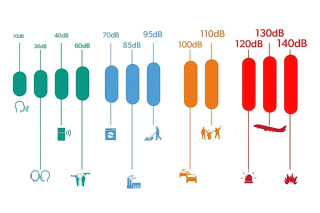Posted Thursday September 25, 2025
We’ve all asked ourselves this question: “Is it really that loud?” The trouble is, your ears can’t always tell you when they’re in danger. Noise-induced hearing loss happens gradually, which makes it easy to ignore until it’s permanent. The good news? A basic understanding of decibels (dB) can help you make safer choices.
Everyday sounds in decibels
Here’s how common sounds stack up:
-
Whisper: 30 dB
-
Normal conversation: 60 dB
-
Vacuum cleaner: 70 dB
-
Busy traffic: 80–85 dB
-
Hair dryer or blender: 90 dB
-
Lawn mower: 95 dB
-
Rock concert or nightclub: 100–110 dB
-
Siren or fireworks: 120+ dB
Now here’s the key: anything above 85 dB can damage your hearing over time.
The rule of thumb
If you need to raise your voice to talk to someone a metre away, it’s too loud. Simple as that.
Safe listening times
Decibel levels don’t just matter because of loudness; duration plays a big role too. At 85 dB, you can listen safely for about 8 hours. But every increase of 3 dB halves the safe time:
-
88 dB: 4 hours
-
91 dB: 2 hours
-
94 dB: 1 hour
-
100 dB: 15 minutes
That means a single night at a concert could expose you to more noise than weeks of everyday life.
Tools to help you measure
-
Many smartphones have built-in sound level meters in their Health app.
-
Free decibel meter apps let you check the environment in real time.
-
Smartwatches like the Apple Watch can alert you if you’re in a harmful environment.
Protecting your hearing
-
Use earplugs or earmuffs when exposed to loud environments.
-
Limit headphone volume to 60% or less.
-
Give your ears a rest: take “quiet breaks” after noisy activities.
Why it matters
Noise-induced hearing loss is permanent. Once those delicate hair cells in your inner ear are damaged, they don’t grow back. But the right habits today can keep your hearing sharp for years to come.
Not sure how your ears are holding up? Book a diagnostic hearing assessment today.
